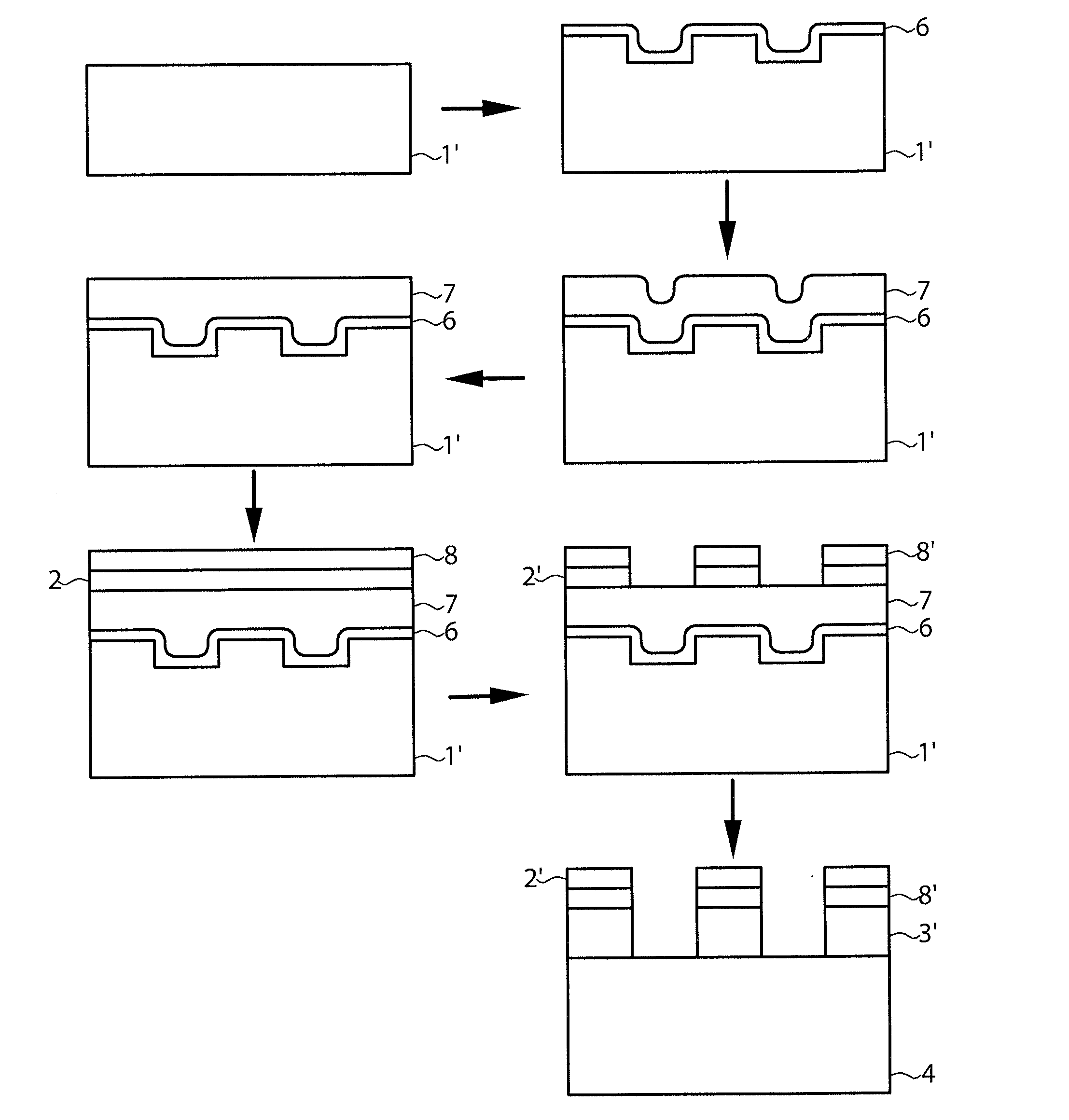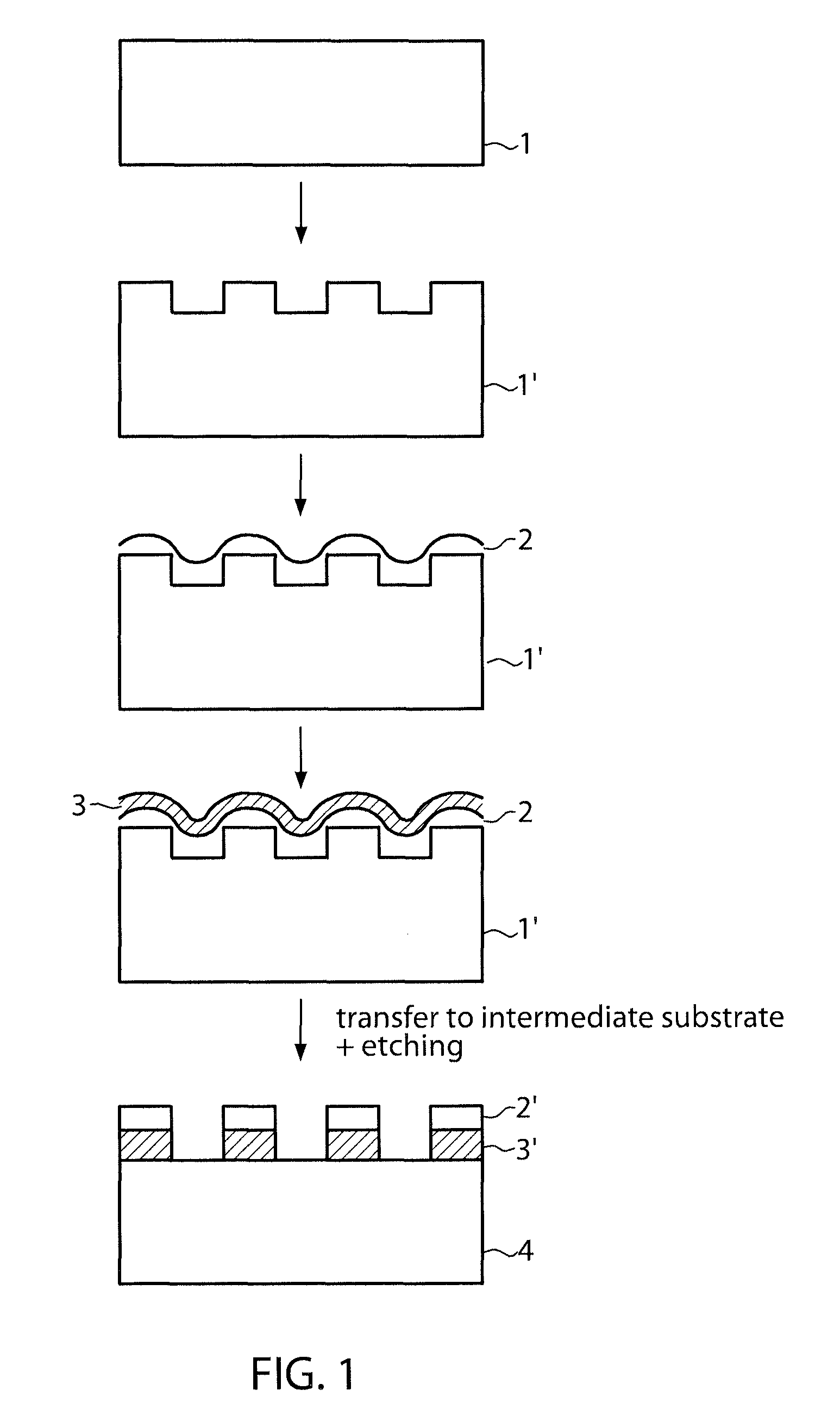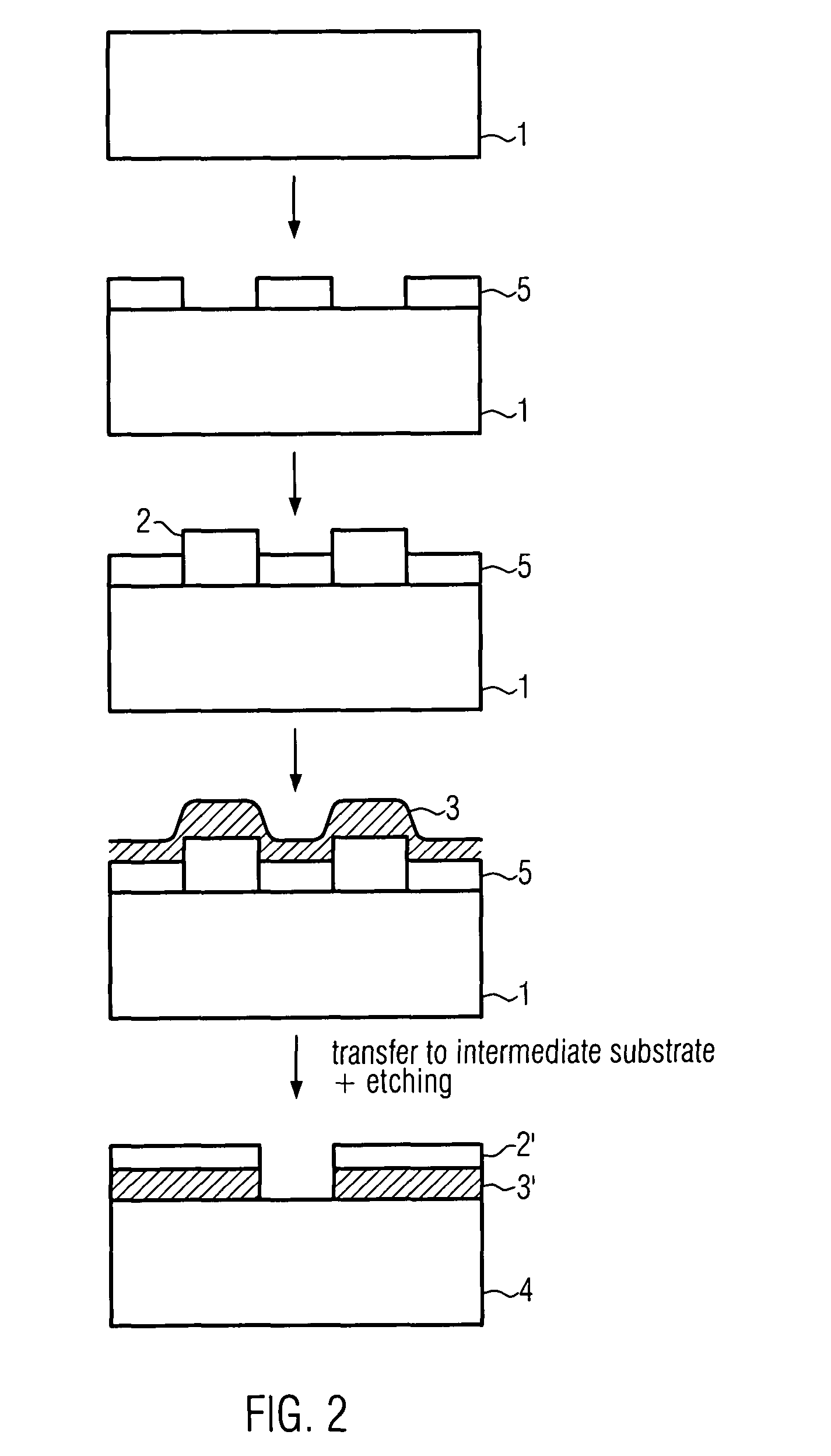Relaxation and transfer of strained material layers
a strained, layer technology, applied in the direction of polycrystalline material growth, crystal growth process, after-treatment details, etc., can solve the problems of strained heteroepitaxial films, buckling suppression does not show satisfying results, and the material quality of layers grown thereon is affected
- Summary
- Abstract
- Description
- Claims
- Application Information
AI Technical Summary
Benefits of technology
Problems solved by technology
Method used
Image
Examples
Embodiment Construction
[0053]In the following, two alternative embodiments of the herein disclosed method for the formation of at least partially relaxed strained material layers are described with reference to FIGS. 1 and 2. As shown in FIG. 1, a seed substrate 1 is provided for the growth of a strained material layer 2. The seed substrate 1 may be, e.g., a sapphire substrate or a silicon substrate. The seed substrate 1 is patterned by etching to obtain seed substrate islands 1′ separated by recesses. The seed substrate islands 1′ may be, e.g., sized to 1 mm×1 mm and spaced apart at about 10 micrometers to 1000 micrometers. The recesses may have a depth of about 1 micrometer.
[0054]After patterning of the seed substrate 1, epitaxy of a strained material, e.g., InGaN with 10% indium, is performed up to a thickness of the strained material layer 2 of about 250 nanometers. In order to improve the crystalline quality of the strained material layer 2, a buffer layer (not shown) may be deposited on the patterne...
PUM
| Property | Measurement | Unit |
|---|---|---|
| temperatures | aaaaa | aaaaa |
| temperatures | aaaaa | aaaaa |
| glass transition temperature | aaaaa | aaaaa |
Abstract
Description
Claims
Application Information
 Login to View More
Login to View More - R&D
- Intellectual Property
- Life Sciences
- Materials
- Tech Scout
- Unparalleled Data Quality
- Higher Quality Content
- 60% Fewer Hallucinations
Browse by: Latest US Patents, China's latest patents, Technical Efficacy Thesaurus, Application Domain, Technology Topic, Popular Technical Reports.
© 2025 PatSnap. All rights reserved.Legal|Privacy policy|Modern Slavery Act Transparency Statement|Sitemap|About US| Contact US: help@patsnap.com



